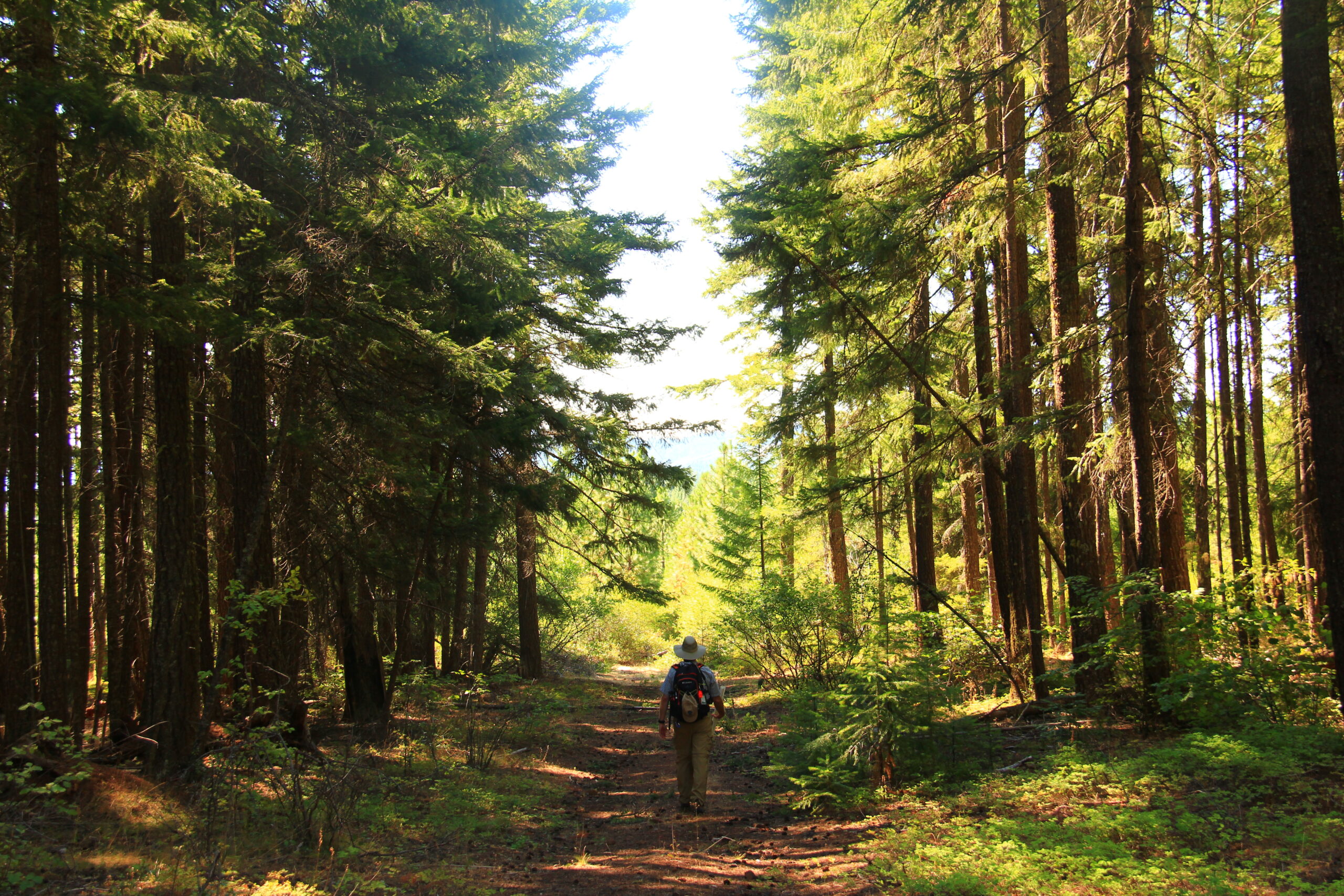Conflicts over living resources arise mainly from the question of use versus preservation: use meaning harvesting a resource as needed by people; preservation meaning leaving nature alone so that people can’t have negative effects on it. The conflict is particularly intense for forests because they play so many roles for humans and for nature. Forests cover vast areas of the Earth, provide clean water and habitat for many species, including endangered ones, and serve to retard erosion and sequester carbon. Equally important, people have valued forests for their resources for millennia. Firewood, for example, was for many centuries a primary fuel and remains so in many parts of the world.
With the rise of the modern environmental movement in the 1960s, forest conservation received increasing attention, which continued throughout the rest of the twentieth century. A characteristic feature of the debate over forests was that all forests should serve all purposes—both use by humans and preservation of nature from humans. Furthermore, if forests were going to be harvested, logging should be done in a “natural” way. This led to battles over individual forests and became especially intense in the Pacific Northwest’s Douglas fir forests, where clear-cutting was widespread, leaving the land looking bleak and destroyed. Conservationists argued that these forests were especially important as habitat for two endangered species, the spotted owl and the marbled murrelet, and also for protecting breeding habitat for salmon.
Economist Meets Ecologist
In the 1990s, Resources for the Future economist Roger Sedjo and I sought a solution by bringing together our different areas of expertise. We began with the simple observation that in order to make a forest and its harvests sustainable, the amount of timber harvested from a forest could not exceed its average annual wood production. There are two alternatives for obtaining timber: cutting wood from old-growth and other natural forests, or harvesting wood from intensively managed plantations that produce high yields on relatively small areas of land.
At the end of the twentieth century, the average annual worldwide consumption of timber was 1.5 billion cubic meters and had been fairly constant for a number of years. Sedjo suggested this amount could provide an estimate of the average annual world production of timber, a more difficult number to quantify directly. The growth rate of usable timber in natural forests ranged from 1 to 3 cubic meters per hectare per year. If harvested sustainably from natural forests, between 0.5 and 1.5 billion hectares would have to be harvested annually to meet the world’s timber needs. Forests cover approximately 3.4 billion hectares. If in the best case, all forests provided the maximum production of 3 cubic meters per hectare a year, then 15 percent of the world’s forestland would undergo harvests. In the worst case, forests would produce 0.5 cubic meters per hectare a year, and 44 percent of the growth would have to be cut. A realistic estimate would be somewhere in the middle, but would still amount to a large fraction of the world’s forestland. Thus, in those areas the conflict over use versus preservation would continue.
Intensively managed plantations could meet the world’s major timber and fiber needs using less than 10 percent of the world’s forest area.
In contrast, plantations—with fast-growing tree species planted and managed much like agricultural lands—could produce 10 cubic meters per hectare annually. If the world’s timber was provided exclusively from plantations, then only 0.15 billion hectares, or roughly 4 percent of the total forestland, would undergo harvests. Even an average production of 5 cubic meters per hectare would require only 8 percent of the world’s forests.
Plantations to the Rescue
Why not divide forestland into two categories: plantations to provide harvestable timber, and all the rest of the world’s forests, to provide the non-harvesting functions of forests? The plantations would have to be carefully managed, of course, keeping factors in mind such as biological diversity, streamside buffers, and ecologically sound methods of pest management in mind.
The solution is not perfect. A problem, for example, with this proposal is that plantations often use exotic species. Because of the well-known environmental problems associated with the introduction of exotic species, plantation managers should select species carefully. Even allowing for these environmental considerations, Sedjo and I concluded that intensively managed plantations could meet the world’s major timber and fiber needs using less than 10 percent of the world’s forest area. It seemed a win-win situation, providing economic benefits to timber producers and environmental benefits for conservationists. The solution to the long-standing debate over how forests should be managed seemed an easy one, and readily at hand.
The Catch
But here’s the catch. Many environmental organizations felt that plantations were not forests and therefore could not be certified as sustainable and could not be part of the solution to the forestry problem. At the time, certification of forests as sustainable had a significant influence on retail sales. This was a resurrection of the ancient idea of a “balance of nature,” the idea that nature undisturbed achieves a constant condition that has maximum biomass and diversity, and will persist indefinitely as long as people do nothing to affect it. People were believed to have only negative effects on nature, especially forests.
Yet as I describe in my book Discordant Harmonies: A New Ecology for the 21st Century (1990), this mythological balance of nature has never existed. Furthermore, many regions of Earth’s lands were greatly modified by preindustrial peoples. American Indians intentionally burned most of the forestland of North America. The result was the kind of forests that conservationists liked and believed had come about by being untouched by people. Following from this belief, plantations were by definition not forests and could not provide part of the solution to managing and conserving forests. This widespread belief remains. As a result, I have addressed the balance of nature myth in its modern context in my new book, The Moon in the Nautilus Shell: Discordant Harmonies Reconsidered (2012).
The combined work of an economist and an ecologist resulted in a practical solution to many environmental problems related to forests.
Around the time I was working with Sedjo, I visited Plum Creek Timber in Maine where professional forester Carl Haag took me to a beautiful plantation of mature spruce. The trees were evenly spaced, and the area between them quite open because of the dense shade created by the spruce and the deep layer of needles on the ground. Haag said that the company ran tours for the public on its lands, including this plantation. He told me that a woman on one of the tours swore that this area had to be natural although he showed her corporate records proving the area had been a farm, revealed when tree planting occurred, and explained that natural seed dispersal could not have created such even spacing between trees. It was the beauty of the plantation that persuaded her that it must have been natural.
Forests Full of Irony
Management of America’s forests is full of irony. Until the end of the twentieth century, private timber corporations and environmental organizations believed they had the best interests of forests at heart and knew how to best manage them. But each group had its own perception of how that management should be done. At the time, while doing ecological research in forests, I knew individuals on both sides, and some of the foresters from private corporations genuinely wanted to have sustainable forests and tried their best to work with environmental groups. Perhaps the height of the attempt at cooperation was when a combination of environmental organizations in Maine got together with representatives of private timber corporations to seek a way to sustain biological diversity in the forests of that state.
In the end, a significant change in forest ownership took place—in part because the timber corporations found that no matter what they suggested, it was never accepted by environmental groups, and also because of other economic considerations. The major timber corporations sold off all or most of their lands, which they managed with professional foresters, and focused on wood processing by simply buying timber on the open market. Much of their land was purchased by investment corporations that were interested in forests for their short-term financial profit, but with little expertise in silviculture. Today, much of the timber purchased by U.S. timber corporations comes from abroad, including developing countries where little attention is paid to sustainable forestry.
As interest in forest research declined, some U.S. timber corporations reduced their large staffs of professional foresters. At the same time, environmentalist pressure on the U.S. Forest Service led to dramatic declines in timber harvests on public lands as well as decreases in forestry research budgets.
The combined work of an economist and an ecologist resulted in a practical solution to many environmental problems related to forests. But the ideologies at the time and the politics of the green movement prevented its application. Today, forests are not the center of environmental concern that they were in the late twentieth century. We hear about them when forest fires destroy property, and we hear about them as places that might sequester carbon to help us deal with climate change. Concerns about when and how to harvest timber, however, rarely appear in the media. Economics and ecology have much to offer to help solve environmental problems, but too often ideology and politics get in the way.
Download or view the pdf here.
Watch an interview with Dr. Botkin here.




